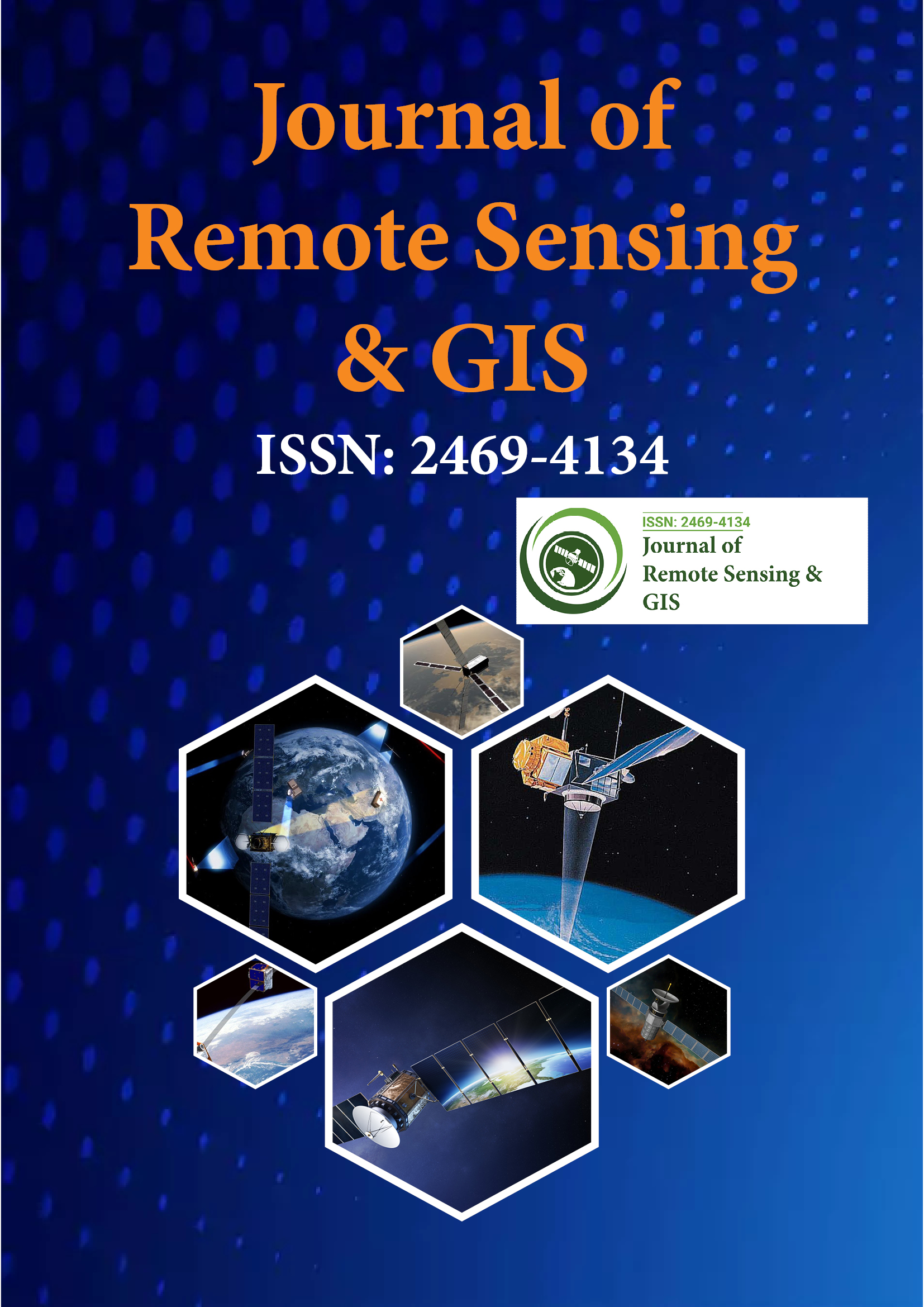Indexed In
- Open J Gate
- RefSeek
- Hamdard University
- EBSCO A-Z
- OCLC- WorldCat
- Publons
- International Scientific Indexing
- Euro Pub
- Google Scholar
Useful Links
Share This Page
Journal Flyer

Open Access Journals
- Agri and Aquaculture
- Biochemistry
- Bioinformatics & Systems Biology
- Business & Management
- Chemistry
- Clinical Sciences
- Engineering
- Food & Nutrition
- General Science
- Genetics & Molecular Biology
- Immunology & Microbiology
- Medical Sciences
- Neuroscience & Psychology
- Nursing & Health Care
- Pharmaceutical Sciences
Perspective - (2025) Volume 14, Issue 3
Enhancing Crop Monitoring and Resource Efficiency: The Role of Remote Sensing Technologies in Precision Agriculture
Sofia Bennett*Received: 29-Aug-2025, Manuscript No. JGRS-25-30285; Editor assigned: 01-Sep-2025, Pre QC No. JGRS-25-30285(PQ); Reviewed: 15-Sep-2025, QC No. JGRS-25-30285; Revised: 22-Sep-2025, Manuscript No. JGRS-25-30285(R); , DOI: 10.35248/2469-4134.25.14.394
Description
Agriculture has benefited extensively from the development of remote sensing techniques. By providing detailed information about crop conditions, soil properties and environmental stressors, remote sensing offers farmers and researchers tools to optimize productivity and resource management. Multispectral and hyperspectral imaging can detect plant health variations, nutrient deficiencies and water stress, enabling timely intervention.
Satellite imagery allows the monitoring of vast agricultural regions, providing insights into crop development stages and potential risks from pests or diseases. Drones equipped with sensors complement satellite data, offering high-resolution information for localized fields. This combination facilitates precision agriculture, where management practices are adjusted according to field-specific conditions rather than uniform treatment across large areas.
Remote sensing also contributes to irrigation management. Thermal sensors detect areas of water stress, indicating where supplemental irrigation is required. Soil moisture mapping supports efficient water use, reducing wastage and conserving resources. Additionally, yield estimation becomes more accurate when satellite and drone data are analyzed over the growing season, helping farmers plan harvests and manage storage or distribution.
Temporal analysis of satellite imagery enables assessment of seasonal changes and long-term trends. Crop rotation effects, soil fertility shifts and climate-related impacts on agriculture can be monitored systematically. Integration with GIS allows spatial analysis of crop patterns, linking environmental variables with productivity.
Challenges include sensor calibration, cloud cover interference and processing large datasets. Advances in cloud computing, machine learning and high-resolution sensors have addressed many of these issues, making remote sensing more accessible and reliable for agriculture.
remote sensing techniques have fundamentally reshaped modern agriculture by providing detailed and actionable data that allows for more precise and informed decision-making. The integration of satellite imagery, drone technologies, spectral analysis and Geographic Information Systems (GIS) has opened new opportunities for farmers, agronomists and researchers to monitor crops, manage irrigation, optimize inputs and predict yields with a level of accuracy that was previously unattainable. These technologies enable stakeholders to understand both spatial and temporal variations across agricultural fields, allowing for management practices that are more responsive to changing conditions.
Satellite remote sensing offers wide-area coverage, making it possible to monitor large agricultural regions simultaneously. Different spectral bands capture unique information, such as vegetation health, moisture levels and soil conditions, which can be used to calculate indices like the Normalized Difference Vegetation Index (NDVI) and Leaf Area Index (LAI). These indices provide insights into plant vigour, stress and biomass, allowing farmers to detect early signs of disease, nutrient deficiencies or pest infestations. Early intervention based on such data reduces losses, enhances productivity and ensures healthier crops.
Drone-based remote sensing complements satellite data by providing high-resolution images and flexibility for targeted observation. Drones can fly at lower altitudes, capturing detailed imagery that reveals variability within individual fields. This information supports precision agriculture practices, where variable-rate fertilization, irrigation and pesticide application can be applied to specific areas rather than uniformly across the entire field. Such targeted management reduces resource wastage, lowers operational costs and minimizes environmental impacts.
Integration with GIS allows for spatial analysis and visualization of agricultural data. Combining information on soil type, topography, weather patterns and crop performance enables farmers to develop management plans that account for multiple factors affecting productivity. GIS-based models can simulate outcomes under different scenarios, supporting long-term planning and risk management.
Remote sensing also contributes to yield prediction by analyzing historical and current crop conditions. By understanding growth trends, farmers can estimate harvest quantities, plan labor and storage requirements and make informed decisions about marketing and distribution. Additionally, continuous monitoring throughout the season enables adaptive management, ensuring that interventions are timely and effective.
Beyond individual farms, remote sensing provides valuable insights at regional and national levels, supporting agricultural policy, food security planning and climate adaptation strategies. It allows researchers to study large-scale patterns of crop performance, land use changes and environmental impacts, facilitating more sustainable and resilient agricultural systems.
In conclusion, the combination of remote sensing technologies and GIS equips agriculture with tools that enhance efficiency, reduce costs, support sustainability and improve productivity. By enabling precise monitoring, targeted management and informed decision-making, these techniques empower farmers and researchers to optimize agricultural practices while addressing environmental and economic challenges.
Citation: Bennett S (2025). Enhancing Crop Monitoring and Resource Efficiency: The Role of Remote Sensing Technologies in Precision Agriculture. J Remote Sens GIS.14:394.
Copyright: © 2025 Bennett S. This is an open-access article distributed under the terms of the Creative Commons Attribution License, which permits unrestricted use, distribution and reproduction in any medium, provided the original author and source are credited.

